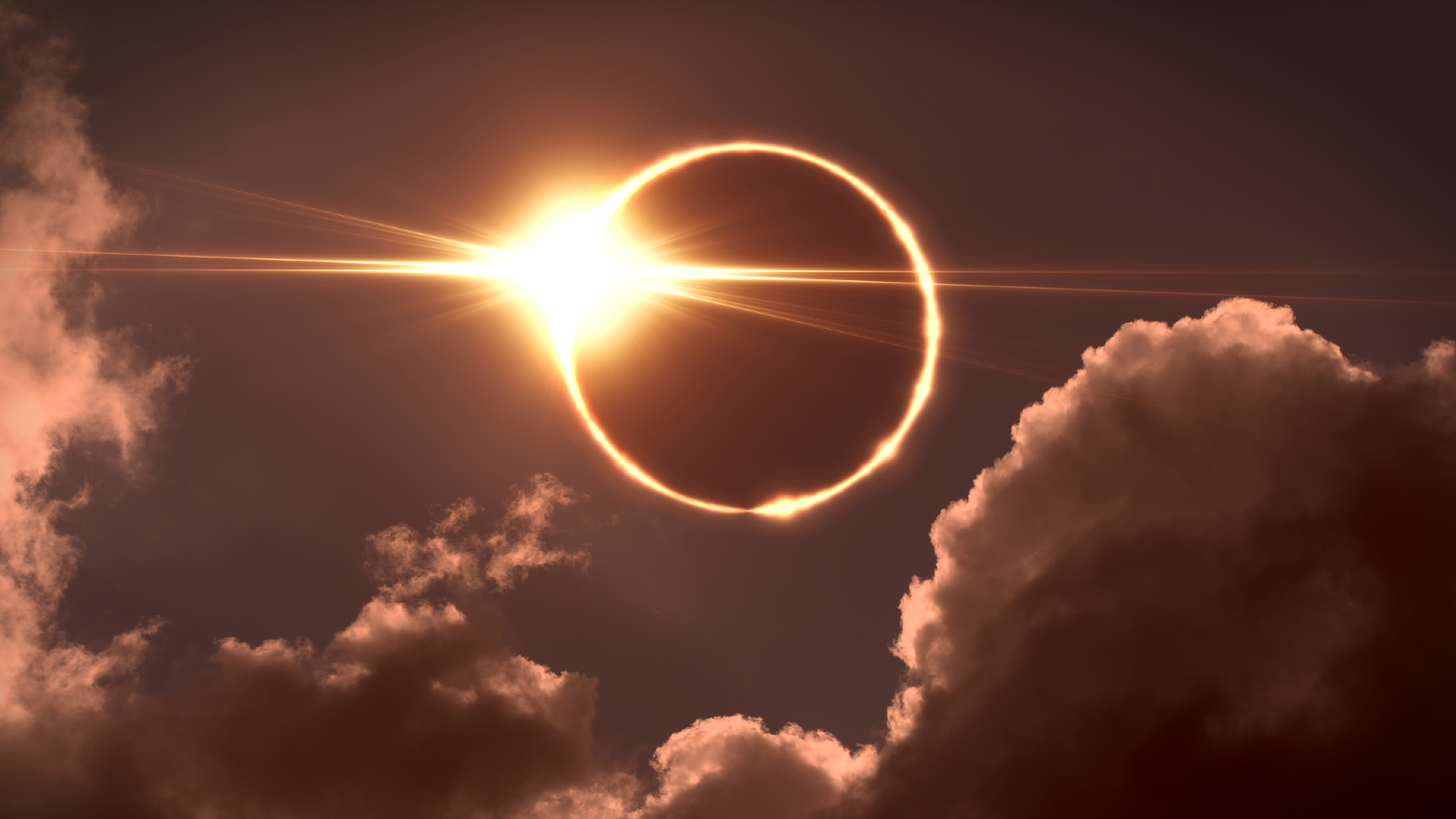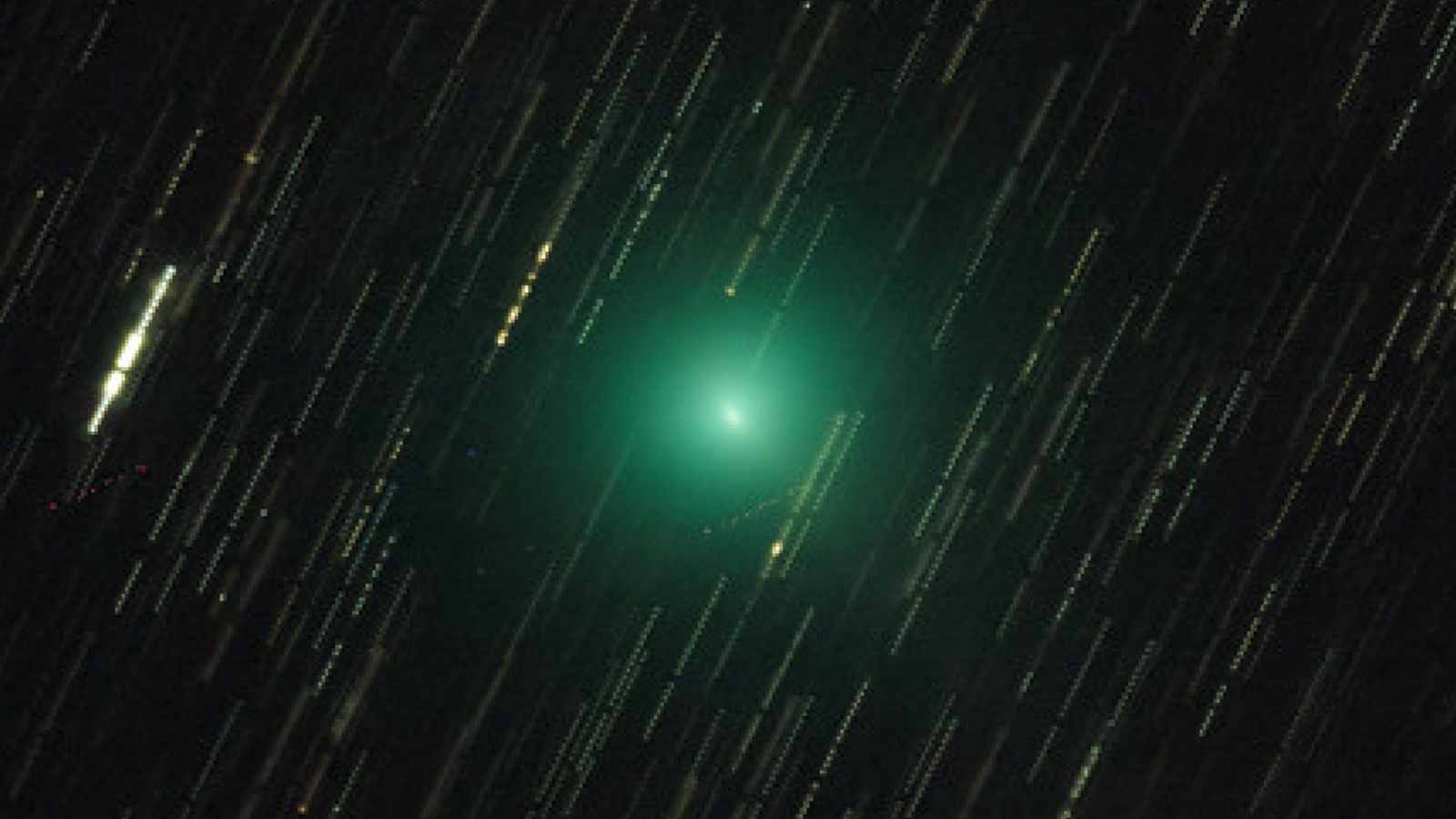Exploding, green 'devil comet' could photobomb April 8 total solar eclipse — and it might be visible with the naked eye
Comet 12P/Pons-Brooks, also known as the "devil comet," will be positioned close to the sun during the April 8 total solar eclipse. Some photographers also predict that the volcanic comet may be visible to the naked eye, especially if it blows its top before the big event.

The explosive "devil comet" could rear its green-tinged, hornless head during the total solar eclipse on April 8. The city-size comet, which is currently racing toward Earth, may show up in photos of the rare astronomical event. And if it erupts before totality — the phase of the eclipse when the sun is completely blocked — the comet could also be visible to the naked eye, one expert claims.
Comet 12P/Pons-Brooks (12P), also known as the devil comet, is a 10.5-mile-wide (17 kilometers) comet that circles the sun on a highly elliptical orbit once roughly every 71 years. 12P is a cryovolcanic, or ice volcano, comet. That means it occasionally erupts when radiation from the sun cracks open its icy shell, or nucleus, allowing it to shoot a combination of ice and gas, known as cryomagma, from its frosty innards into space. When this happens, the cryomagma expands the comet's coma — the cloud of gas and dust around a comet's nucleus — making it appear much brighter for the next few days.
Last July, astronomers watched 12P blow its top for the first time in 69 years, and ever since, it has erupted reasonably frequently. During 12P's early eruptions, the comet's expanded coma grew lopsided. That made it look like it had horns, leading to its demonic nickname. However, during more-recent eruptions, these horns have been absent. Recent photos of the comet also show that it gives off green light, which is caused by high levels of dicarbon in its coma and tail.
12P is expected to make its closest approach to the sun on April 24 before slingshotting around our home star and making its closest approach to Earth on June 2. This means that during the upcoming eclipse, which will be visible across large parts of North America, 12P will be a lot brighter than it is now and will be positioned very close to the sun. As a result, the comet could be visible to photographers with powerful lenses when the moon temporarily blocks out the sun's light, according to Spaceweather.com.
For astrophotographers, capturing such a rare image would be a "dream come true," Petr Horálek, an astrophotographer based in the Czech Republic, told Live Science in an email. "Such an opportunity is truly very rare!"
Related: What's the longest solar eclipse in history? (And how does the April 2024 total eclipse compare?)
Arizona-based astrophotographer Eliot Herman, who has been regularly photographing 12P over the past year, is also confident that the comet will be visible via camera and is planning to stack multiple images of the event together to enhance the comet's light.
Get the world’s most fascinating discoveries delivered straight to your inbox.
12P will be positioned near Jupiter, which should be visible to the naked eye and will be located slightly above and to the left of the sun as viewed from the ground, Herman told Live Science. This will provide a great "spatial marker" for photographers to locate the green comet, he added.
If the comet explodes in the days leading up to the eclipse, there is a good chance that it, too, will be visible to the naked eye, Herman said. However, these outbursts are "notoriously difficult to predict," he added.
Horálek, who has been tracking the comet for a while as well, also believes 12P could be visible with the naked eye — but only if a large eruption occurs shortly before.
(Reminder: You should always use protective eyewear, such as official eclipse glasses, when viewing the partial phase of an eclipse. Only during totality, when the sun is completely blocked by the moon, is it safe to look at the sun with the naked eye. Failure to do so could result in permanent eye damage.)
Other astrophotographers are less certain about the comet's visibility during the eclipse. Michael Jäger, an Austria-based photographer who has also been keeping an eye on 12P, told Live Science that he is "very skeptical that the comet will be visible to the naked eye," even with a large outburst.
Past solar eclipses have allowed photographers to take equally rare and unique photos. Last year, during the hybrid solar eclipse visible above Australia on April 20, Horálek and others captured a stunning image of a large solar storm exploding from the sun during totality.
During the April 8 eclipse, the sun will also be at solar maximum, the most active phase of the sun's 11-year solar cycle. As a result, its corona — the outer atmosphere, which looks like a sea of ghostly white tendrils during an eclipse — will be especially visible, making this year's eclipse a once-in-a-lifetime event.

Harry is a U.K.-based senior staff writer at Live Science. He studied marine biology at the University of Exeter before training to become a journalist. He covers a wide range of topics including space exploration, planetary science, space weather, climate change, animal behavior and paleontology. His recent work on the solar maximum won "best space submission" at the 2024 Aerospace Media Awards and was shortlisted in the "top scoop" category at the NCTJ Awards for Excellence in 2023. He also writes Live Science's weekly Earth from space series.





